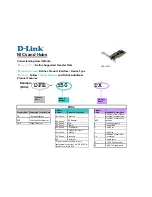
37
Open Shortest Path First (OSPFv2 and
OSPFv3)
The MXL 10/40GbE Switch IO Module platform supports open shortest path first version 2 (OSPFv2) for
IPv4 and version 3 (OSPFv3) for IPv6. Up to 16 OSPF instances can be run simultaneously on the MXL
Switch.
OSPF is an Interior Gateway Protocol (IGP), which means that it distributes routing information between
routers in a single Autonomous System (AS). OSPF is also a link-state protocol in which all routers contain
forwarding tables derived from information about their links to their neighbors.
The fundamental mechanisms of OSPF (flooding, DR election, area support, SPF calculations, and so on)
are the same for OSPFv2 and OSPFv3. OSPFv3 runs on a per-link basis instead of on a per-IP-subnet
basis.
This chapter is divided into two sections. There is no overlap between the two sets of commands. You
cannot use an OSPFv2 command in the IPv6 OSPFv3 mode.
•
OSPFv2 Commands
•
OSPFv3 Commands
NOTE:
Multi-process OSPF is supported on IPV4 OSPFv2 only. It is not supported on IPv6 OSPFv3.
The CLI requires that you include the Process ID when entering ROUTER-OSPF mode. Each
command entered applies to the specified OSPFv2 process only.
OSPFv2 Commands
The Dell Networking implementation of OSPFv2 is based on IETF RFC 2328.
area default-cost
Set the metric for the summary default route the area border router (ABR) generates into the stub area.
Use this command on the border routers at the edge of a stub area.
Syntax
area
area-id
default-cost
cost
To return default values, use the
no area
area-id
default-cost
command.
924
Open Shortest Path First (OSPFv2 and OSPFv3)
















































